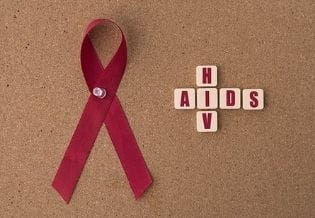Author Contributions
Copyright © 2012 Christophe Marchand, et al.
 This is an open-access article distributed under the terms of the Creative Commons Attribution License, which permits unrestricted use, distribution, and reproduction in any medium, provided the original author and source are credited.
This is an open-access article distributed under the terms of the Creative Commons Attribution License, which permits unrestricted use, distribution, and reproduction in any medium, provided the original author and source are credited.
Competing interests
The authors have declared that no competing interests exist.
Citation:
Introduction
The approval of raltegravir (Isentress®, Merck & Co.) in 2007 by the Food and Drug Administration (FDA) for the treatment of HIV/AIDS provided novel therapeutic options for patients failing existing therapies. The use of this first HIV integrase inhibitor (INI) in the clinic had a major impact on the outcome of the disease. The antiretroviral therapeutic arsenal is now complete to target the three retroviral enzymes, reverse transcriptase (RT), protease and integrase (IN).
Raltegravir is usually administered at 400 mg twice daily in combination with nucleoside reverse transcriptase inhibitors (NRTIs) and offers an excellent efficacy and safety profile1. Nevertheless, some patients fail raltegravir treatment due to the appearance of resistance mutations in the IN gene. There are 3 major pathways involved in raltegravir resistance characterized by the mutation of the IN residues G140/Q148 (double mutation), N155 and Y1432. Novel INIs, which could alleviate partially or completely raltegravir resistance are currently being developed. At the same time, antiviral regimens are being simplified with single oral formulations administered once daily to increase patient treatment adherence.
Recently the FDA approved the elvitegravir quad pill (Stribild®, Gilead Sciences) for the treatment of HIV/AIDS (August 27, 2012). This “4 in 1” tablet consists of a combination of elvitegravir, an INI boosted by the pharmaco-enhancer cobicistat and associated with the two NRTIs emtricitabine and tenofovir disoproxil fumarate. Cobicistat, by boosting the elvitegravir blood concentration, allows the administration of elvitegravir at 150 mg once daily with an efficacy and safety comparable to raltegravir 400 mg twice daily3. The elvitegravir quad pill therefore represents the first once daily dual target (IN and RT) anti-HIV tablet available for the treatment of HIV/AIDS4. Elvitegravir and raltegravir share the same mechanism of action but elvitegravir, in contrast to raltegravir, does not interact with the Y143 integrase residue5. Elvitegravir therefore overcomes raltegravir resistance involving the 143 pathway6. The partial alleviation of raltegravir resistance by elvitegravir represents a significant improvement especially in the treatment of patients failing raltegravir therapy due to resistance mutations at the 143 position. This new once daily single formulation regimen should also greatly simplify drug administration and therefore promote patient treatment adherence.
A second once daily single formulation tablet referred to as the 572-Trii pill (Shionogi-ViiV Healthcare, LLC) is currently in late phase clinical trials. The 572-Trii pill is also based on the dual inhibition of IN and RT and combines the INI dolutegravir (50 mg unboosted) with the two NRTIs lamivudine and abacavir7. Dolutegravir (formerly S/GSK1349572) exhibits a higher genetic barrier to resistance when compared to raltegravir7, 8. Dolutegravir shares the same mechanism of action than raltegravir and elvitegravir but its improved resistance profile is currently not well understood9. Because of its best in class resistance profile, the 572-Trii pill may offer some advantages for patients failing raltegravir or elvitegravir-based regimens. Shionogi-ViiV Healthcare recently opened an Extended Access Program (EAP) under the clinical trials identifier NCT1536873 to provide access to dolutegravir to patients in life threatening situations with existing resistance to raltegravir and elvitegravir.
There is no doubt that these two once daily dual target single formulations will complement efficiently raltegravir and become important assets to the 35 FDA-approved drug arsenal against HIV/AIDS.
References
- 1.Eron J J, Rockstroh J K, Reynes J, Andrade-Villanueva J, Ramalho-Madruga J V et al.Nguyen BY.(2011Dec)Raltegravir once daily or twice daily in previously untreated patients with HIV-1: a randomised, active-controlled, phase 3 non-inferiority trial. Lancet Infect Dis.http://www.ncbi.nlm.nih.gov/pubmed/21933752. 11(12), 907-15.
- 2.Metifiot M, Maddali K, Naumova A, Zhang X, Marchand C.Pommier Y.(2010May4)Biochemical and pharmacological analyses of HIV-1 integrase flexible loop mutants resistant to raltegravir. , Biochemistry.http://www.ncbi.nlm.nih.gov/pubmed/20334344 49(17), 3715-22.
- 3.Molina J M, Lamarca A, Andrade-Villanueva J, Clotet B, Clumeck N et al.Chuck SL.(2012Jan)Efficacy and safety of once daily elvitegravir versus twice daily raltegravir in treatment-experienced patients with HIV-1 receiving a ritonavir-boosted protease inhibitor: randomised, double-blind, phase 3, non-inferiority study. , Lancet Infect Dis.http://www.ncbi.nlm.nih.gov/pubmed/22015077 12(1), 27-35.
- 4.Marchand C.(2012Jul)The elvitegravir Quad pill: the first once-daily dual-target anti-HIV tablet. Expert opinion on investigational drugs.http://www.ncbi.nlm.nih.gov/pubmed/22571404. 21(7), 901-4.
- 5.Hare S, Gupta S S, Valkov E, Engelman A.Cherepanov P.(2010Mar11)Retroviral intasome assembly and inhibition of DNA strand transfer. , Nature.http://www.ncbi.nlm.nih.gov/pubmed/20118915 464(7286), 232-6.
- 6.Metifiot M, Vandegraaff N, Maddali K, Naumova A, Zhang X et al.Pommier Y.(2011Jun1)Elvitegravir overcomes resistance to raltegravir induced by integrase mutation Y143. , Aids.http://www.ncbi.nlm.nih.gov/pubmed/21505303 25(9), 1175-8.
- 7.J van Lunzen, Maggiolo F, Arribas J R, Rakhmanova A, Yeni P et al.Min S.(2012Feb)Once daily dolutegravir (S/GSK1349572) in combination therapy in antiretroviral-naive adults with HIV: planned interim 48 week results from SPRING-1, a dose-ranging, randomised, phase 2b trial. Lancet Infect Dis.http://www.ncbi.nlm.nih.gov/pubmed/22018760. 12(2), 111-8.
Cited by (1)
- 1.Wagner Glenn J., Ghosh-Dastidar Bonnie, Slaughter Mary Ellen, 2015, Engagement in HIV Prevention Advocacy Associated with Increased Consistent Condom Use Among HIV Clients in Uganda, AIDS and Behavior, 19(7), 1150, 10.1007/s10461-014-0934-5

